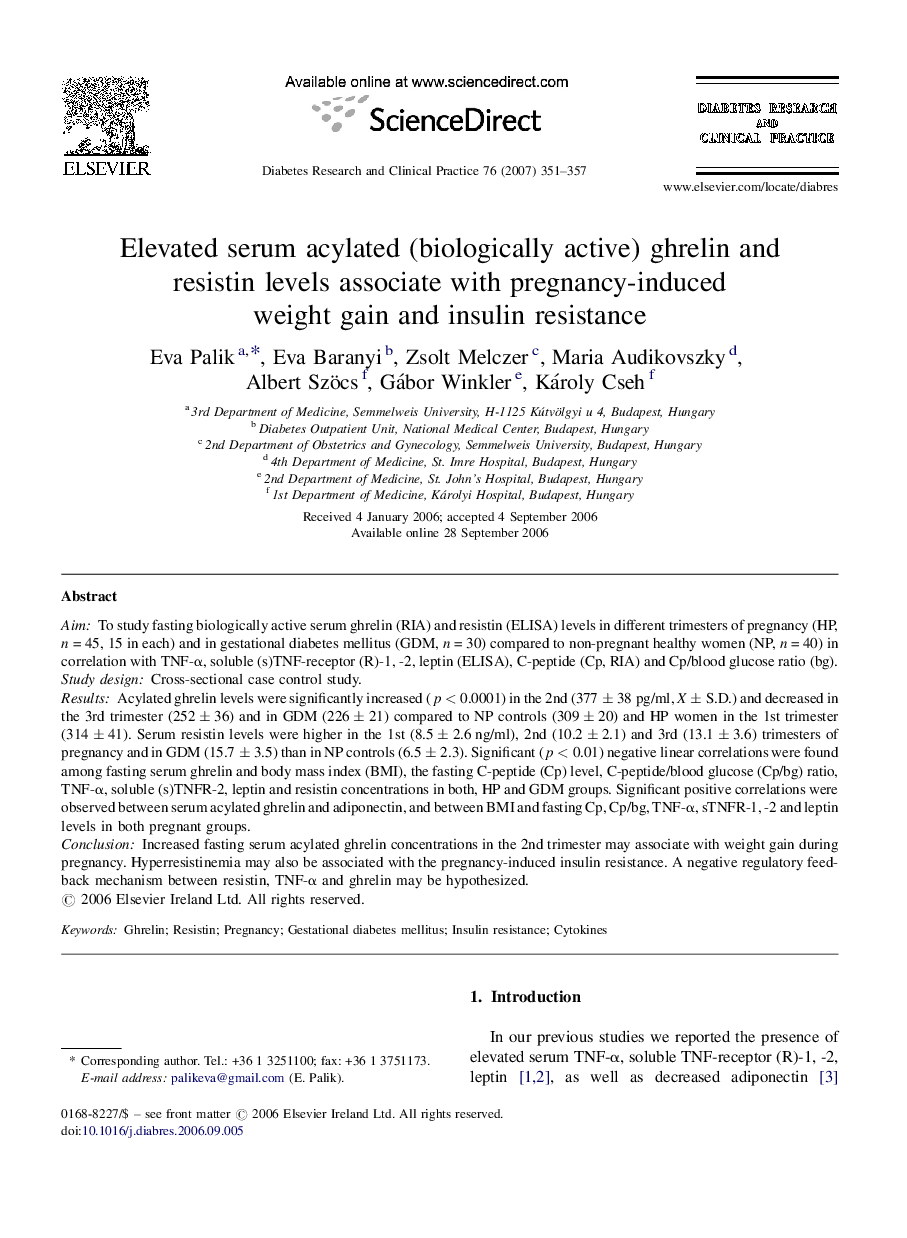| Article ID | Journal | Published Year | Pages | File Type |
|---|---|---|---|---|
| 2798921 | Diabetes Research and Clinical Practice | 2007 | 7 Pages |
AimTo study fasting biologically active serum ghrelin (RIA) and resistin (ELISA) levels in different trimesters of pregnancy (HP, n = 45, 15 in each) and in gestational diabetes mellitus (GDM, n = 30) compared to non-pregnant healthy women (NP, n = 40) in correlation with TNF-α, soluble (s)TNF-receptor (R)-1, -2, leptin (ELISA), C-peptide (Cp, RIA) and Cp/blood glucose ratio (bg).Study designCross-sectional case control study.ResultsAcylated ghrelin levels were significantly increased (p < 0.0001) in the 2nd (377 ± 38 pg/ml, X ± S.D.) and decreased in the 3rd trimester (252 ± 36) and in GDM (226 ± 21) compared to NP controls (309 ± 20) and HP women in the 1st trimester (314 ± 41). Serum resistin levels were higher in the 1st (8.5 ± 2.6 ng/ml), 2nd (10.2 ± 2.1) and 3rd (13.1 ± 3.6) trimesters of pregnancy and in GDM (15.7 ± 3.5) than in NP controls (6.5 ± 2.3). Significant (p < 0.01) negative linear correlations were found among fasting serum ghrelin and body mass index (BMI), the fasting C-peptide (Cp) level, C-peptide/blood glucose (Cp/bg) ratio, TNF-α, soluble (s)TNFR-2, leptin and resistin concentrations in both, HP and GDM groups. Significant positive correlations were observed between serum acylated ghrelin and adiponectin, and between BMI and fasting Cp, Cp/bg, TNF-α, sTNFR-1, -2 and leptin levels in both pregnant groups.ConclusionIncreased fasting serum acylated ghrelin concentrations in the 2nd trimester may associate with weight gain during pregnancy. Hyperresistinemia may also be associated with the pregnancy-induced insulin resistance. A negative regulatory feed-back mechanism between resistin, TNF-α and ghrelin may be hypothesized.
